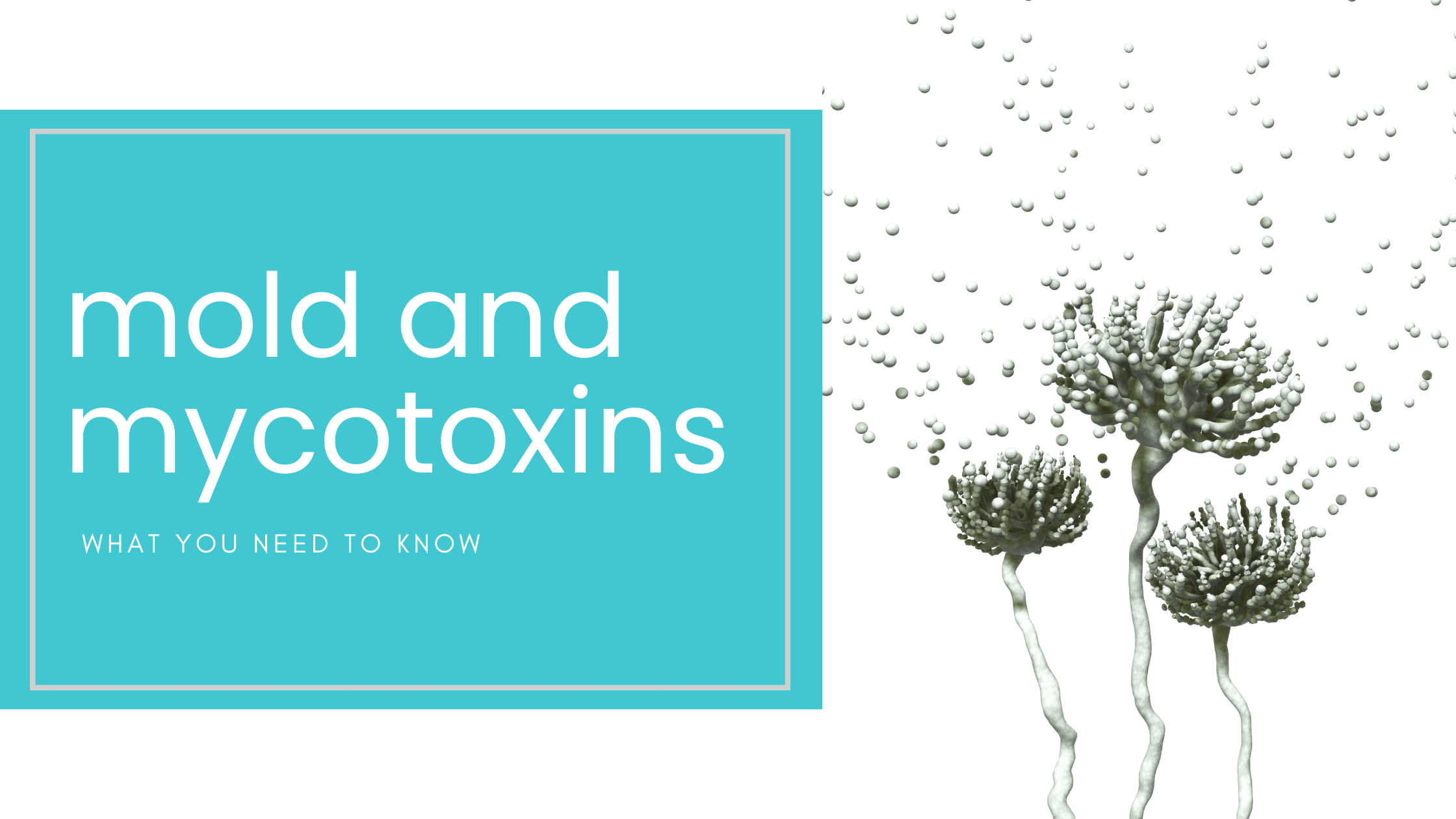
You’ve likely heard the stories of people being sick for years, visiting doctor after doctor, only to learn that their symptoms (when they finally find the right healthcare provider) are the result of mold toxicity. Of course, we immediately think of the highly publicized black mold found in water damaged buildings.
But did you know that mycotoxins found in food can be equally dangerous?
Mycotoxins are naturally-occurring compounds that are produced by fungi (molds, yeasts and mushrooms).There are over 400 different mycotoxins, and unfortunately any of them can cause health problems. Because there are so many different mycotoxins, symptoms of toxin exposure might attack one organ or be diffuse, causing many symptoms that don’t seem to be related.
Unlike mold itself which is a living organism and susceptible to being destroyed by medications or your immune system, mycotoxins are actual toxins produced by the mold and can deposit in your body’s tissues and persist for years. They aren’t destroyed by your immune system and in fact can wreak havoc in your body long after the exposure is gone. They need to be cleared out by your body’s detox system.
Issues Related to Mycotoxin Exposure
- Allergies
- Asthma
- Risk for Cancer
- Changes in cognition and/or mood
- Diseases affecting the liver and kidneys
- Eye infections and irritation
- Fungal infections, such as nails and vagina
- High blood pressure
- High cholesterol
- Nasal irritation and sinusitis
- Respiratory infections
- Skin infections
- Damaged immune system
Foods that Harbor Mycotoxins
According to the World Health Organization (WHO) about 25% of the world’s agricultural products are contaminated with mycotoxins. Several factors contribute to the presence of mycotoxins in food – climate, pests and harvesting and storage practices.
Here at Blum Center for Health we often test for toxins and of the hundreds of mycotoxins, here are the most prevalent we find and their implication on your health:
AFLATOXINS: Known for its carcinogenic and toxic effects, aflatoxins also affect the liver, and suppress your immune system. It has been classified as a Group 1 carcinogen by the International Agency for Research on Cancer (IARC). Aflatoxins are often found in peanuts, corn, rice, coffee beans and tree nuts, particularly in warm and humid environments where mold growth is more common.
CITRININ: This mycotoxin is primarily associated with liver and kidney damage, and impairs cell function due to mitochondrial damage. It is often found in wheat, corn, rice, apples, nuts and red yeast rice
FUMONISINS: These mycotoxins cause liver, kidney and nerve damage. Researchers have also found a link between fumonisins and esophageal cancer and birth defects. They are one of the most prevalent fungi associated with contamination of corn and other grains, including wheat, barley, oat, sorghum, rice, rye and millet.
OCHRATOXINS: Ochratoxins have been shown to be toxic to the kidneys, liver, cause cancers, weaken the immune system and are considered toxic to embryos. It has been suggested that ochratoxins are associated with neurodegenerative diseases, such as Parkinson’s and Alzheimer’s. It is found in barley, oats, rye, wheat, coffee beans, and other plant products, with barley having a particularly high likelihood of contamination. It is also frequently found in pork products.
TRICHOTHECENES: These mycotoxins are known to induce gastrointestinal issues, including vomiting and diarrhea. They can also cause skin and neurological symptoms. They are found mainly in corn, but can also be found in other grains, such as wheat, oats, barley, rye, sorghum and rice.
ZEARALENONES: Zearalenones are known hormone distruptors. They are a type of phytoestrogen (plant-based estrogen) which mimics estrogen in the body. They impact the reproductive system as well as damage the liver as suppress the immune system. While zearalenones are found primarily in water-damaged buildings, they are also found in corn, wheat, barely and rice.
Your Liver is An Incredible Organ
Although the human body has an innate capacity to detoxify itself, people now are exposed to a level of consumer, agricultural, and industrial toxins that we are no longer able to handle.
Toxins do all sorts of damage: they gradually clog the liver, block insulin-receptor sites, damage the genes, and undermine DNA repair and recovery. As noted earlier, they contribute to inflammation, blood-sugar problems, digestive problems, mitochondrial disorders, low energy, immune and a host of other problems. When toxins build up over time to overload your body, they gradually undermine your health and cause disease.
Think of it this way: You want to keep your overall toxin load as low as possible. It could be any one that tips the scale. While it’s important to identify the main culprits so that you can reduce your exposure, it’s not necessary to know this for treatment purposes. Therefore, we recommend addressing toxins in the body by taking a broad spectrum approach to reduce all toxins.
The Good News: You Can Protect Yourself from Mycotoxins
- Buy the freshest possible food – think local!
- Buy low residue organic coffee
- Store nuts and seeds in the fridge and do not purchase them out of large bulk bins
- Inspect grains, nuts, seeds before eating or cooking with them and discard anything that looks discolored, moldy or doesn’t feel good
- Buy organic, non-GMO products
- Minimize processed food grain products, including breads, crackers, rice and others
- Don’t keep foods for extended periods of time before being used
The good news is … elevated mycotoxins are not only preventable, they’re also reversible.
Ready to assess your toxin load and learn what you need to do to bring your body back into equilibrium? Join the 3-Day Toxin Reset where you will learn:
Day 1: What are toxins and how they are connected to your health
Day 2: Where in your past and in your daily life are toxins found
Day 3: What you can do about it using food as medicine, supplementation and minimizing exposure
